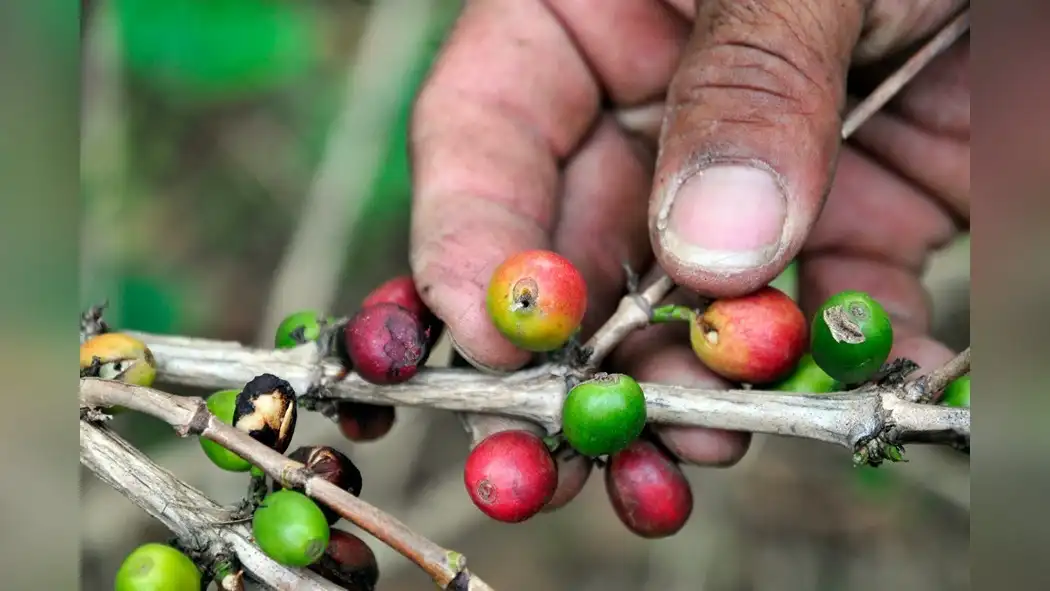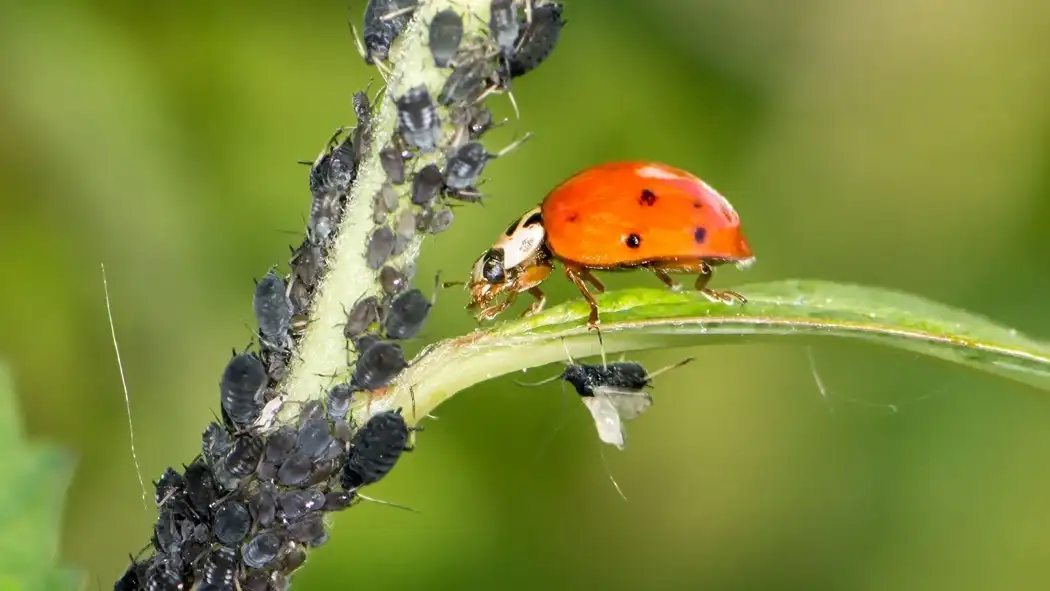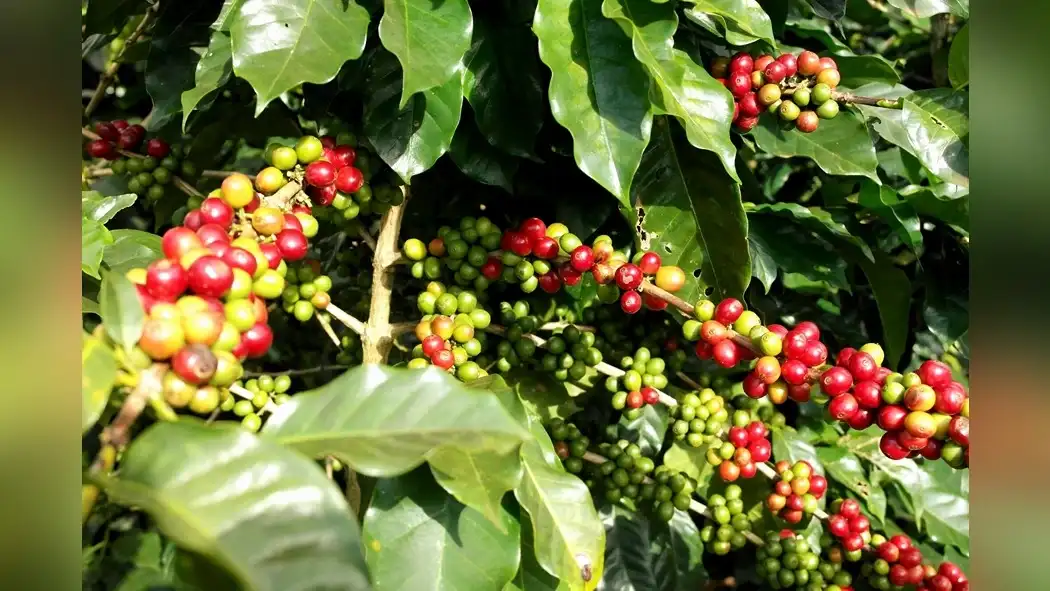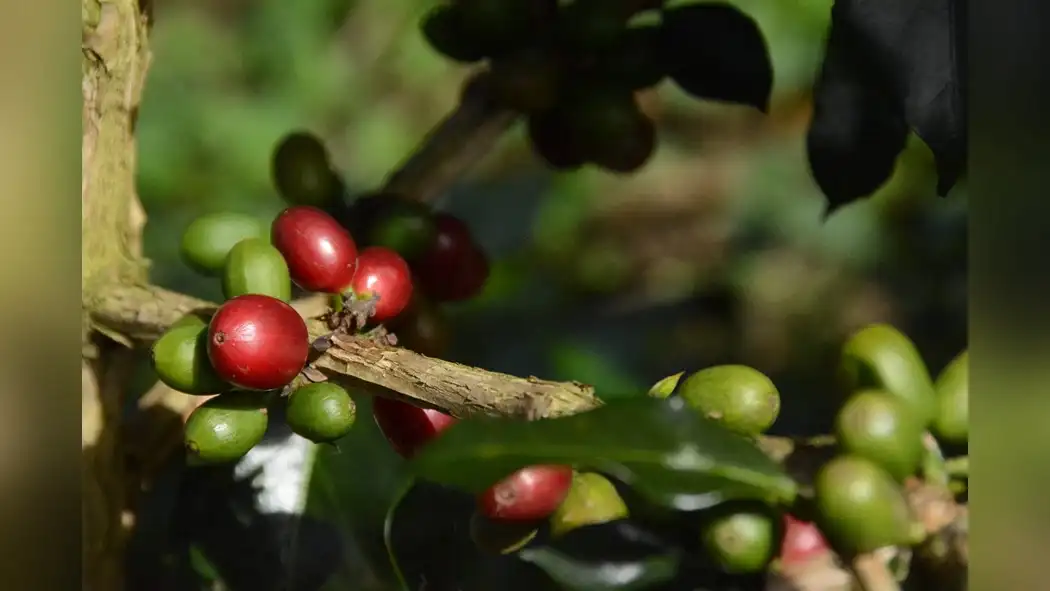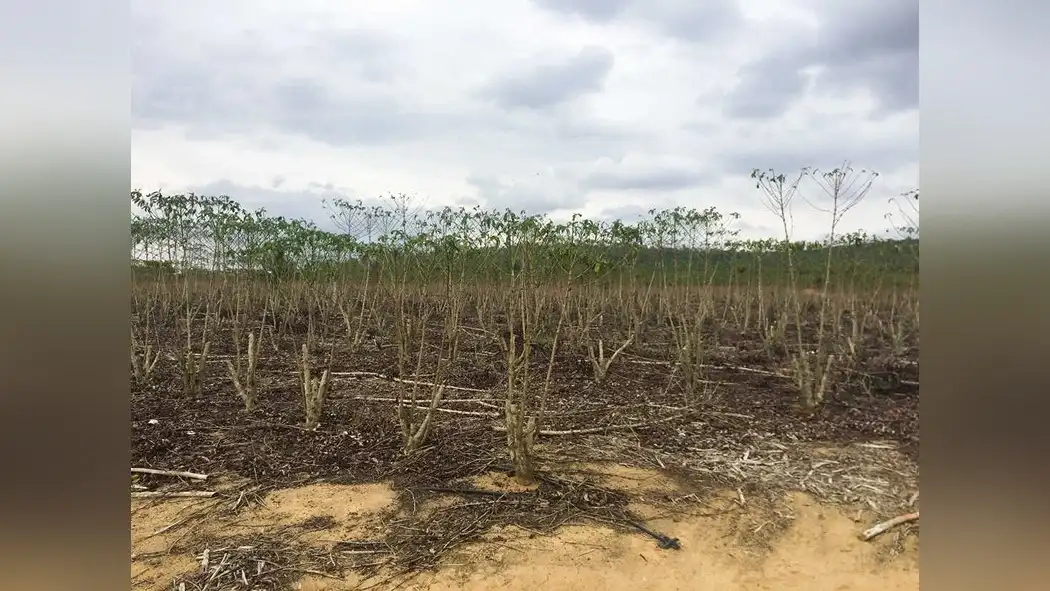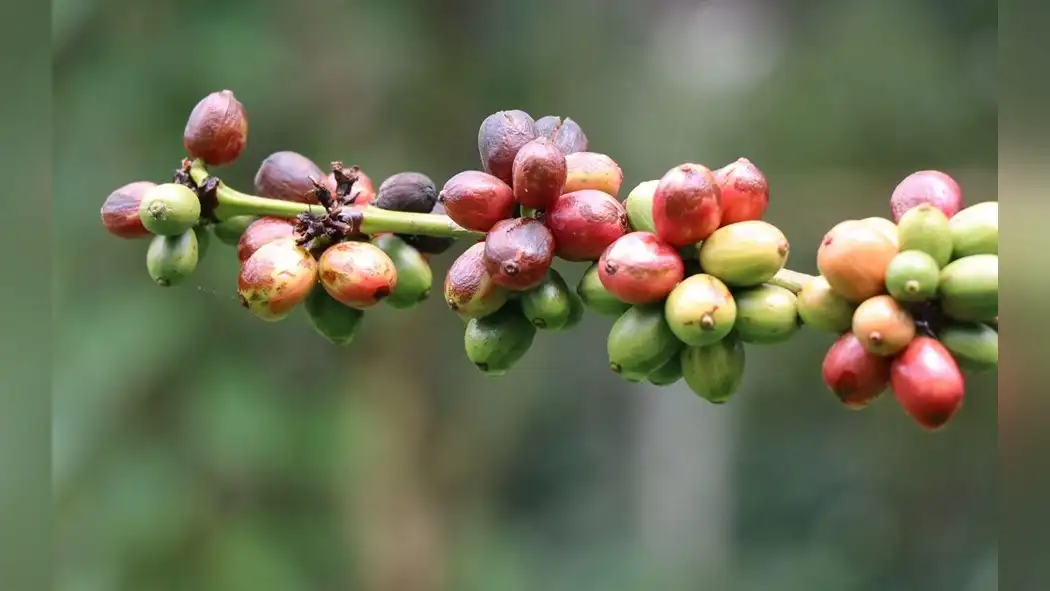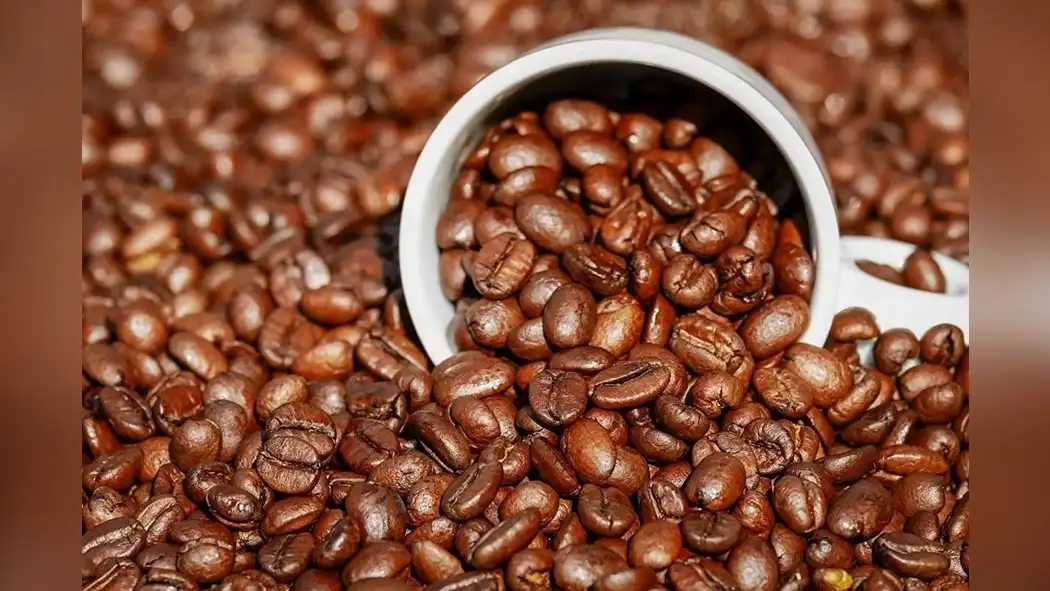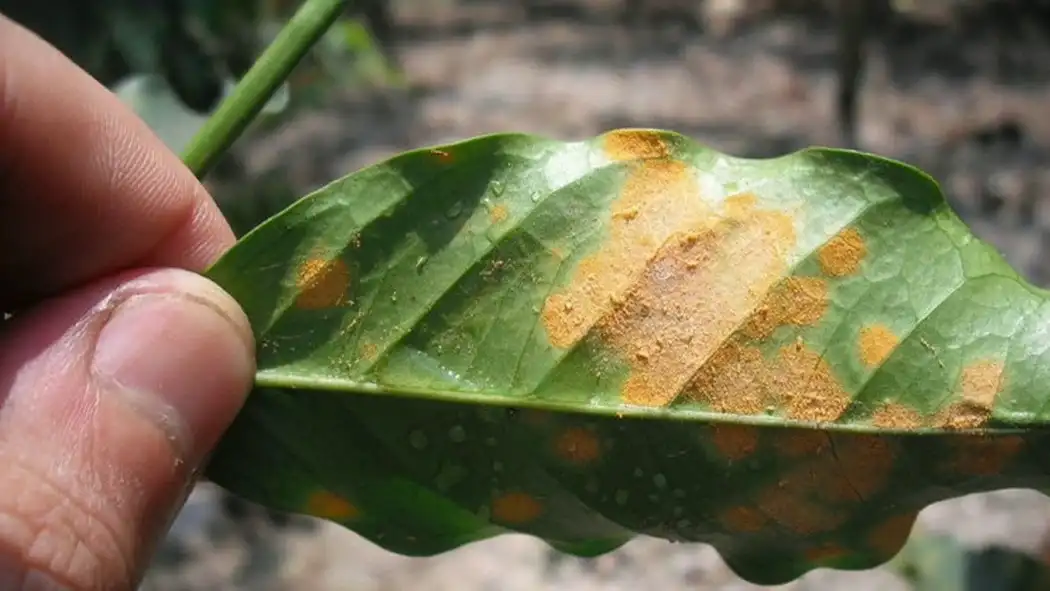You've noticed coffee berries on your robusta plants being damaged by pests, affecting your crop yield. Implementing effective pest control strategies is crucial to defend against the coffee berry borer and other harmful pests.
This guide will walk you through integrated pest management techniques, biological control methods, chemical control options, cultural practices for pest prevention, and monitoring and early detection strategies.
By understanding these approaches and implementing sustainable pest control strategies, you can protect your robusta coffee plants from devastating pest damage, ensuring a healthy and thriving crop.
Understanding Coffee Berry Borer
To effectively defend your robusta coffee crops against the coffee berry borer, you must understand the life cycle and behavior of this destructive pest.
The coffee berry borer life cycle consists of four stages: egg, larva, pupa, and adult. Understanding these stages is crucial for implementing effective pest control measures. The female borer lays eggs inside the coffee cherry, and once hatched, the larvae feed on the coffee bean, causing damage. As they mature, they pupate within the bean before emerging as adults to continue the cycle.
To combat this pest, it's essential to employ integrated pest management strategies. This includes regular monitoring of borer populations, proper pruning to remove infested cherries, and the use of biological controls such as insect-parasitic nematodes or fungi. Additionally, maintaining good farm hygiene and ensuring proper harvesting and processing techniques can help minimize the spread of this pest.
Integrated Pest Management Techniques
Implement integrated pest management techniques to effectively defend your robusta coffee crops against the coffee berry borer and other pests. Integrated pest management (IPM) involves strategic approaches that take into account the pest population and ecology, aiming to minimize the impact of pests while promoting sustainable and environmentally friendly practices.
By understanding the pest population dynamics and ecology, you can identify the most vulnerable stages of the pests' life cycle and target control measures more effectively.
Monitoring the pest population is crucial for implementing successful IPM strategies. Regularly assess the pest levels in your coffee plantation to determine the severity of infestation and make informed decisions about pest control measures. Additionally, understanding the pest ecology, such as their behavior and preferred habitats, can help in developing targeted interventions that disrupt their life cycle and reduce their impact on the coffee crops.
Furthermore, integrating various pest management techniques, such as biological control, cultural practices, and judicious use of pesticides, can help maintain pest populations at manageable levels without causing harm to the environment or non-target organisms.
Biological Control Methods
When tackling biological control methods for robusta coffee pest management, there are several strategies to consider. One approach is the use of predator insects to specifically target pests. This can involve introducing natural enemies of the pests into the coffee plantation, such as ladybugs or predatory mites, to control their populations. Another strategy is the implementation of disease-resistant coffee varieties. By cultivating coffee plants that are naturally resistant to common pests, the need for chemical pesticides can be reduced. Cultural management practices also play a vital role in the biological control of coffee pests. This includes adjusting shading and pruning techniques to create a less favorable environment for pests to thrive. By providing less favorable conditions for pests, their populations can be effectively controlled. Overall, a combination of these strategies can help to manage coffee pests in a more sustainable and environmentally friendly manner.
Predator Insects for Pests
You can enhance robusta coffee pest control by introducing predator insects for effective biological control of pests. Consider these strategies to utilize beneficial insects as pest predators:
- Ladybugs: Introduce ladybugs to your robusta coffee plantation to feed on aphids, mites, and other soft-bodied pests that can damage coffee plants. Ladybugs are voracious eaters and can significantly reduce pest populations.
- Parasitic Wasps: Encourage the presence of parasitic wasps, which lay their eggs on pests like coffee berry borers. When the eggs hatch, the wasp larvae feed on the pest, effectively controlling their numbers.
- Hoverflies: Attract hoverflies to your coffee plantation as they're natural predators of aphids. These beneficial insects help keep aphid populations in check, preventing them from damaging coffee plants.
Introducing these predator insects can create a balanced ecosystem that naturally controls pest populations, reducing the need for chemical pesticides.
Disease-Resistant Coffee Varieties
To further bolster your robusta coffee pest control efforts, consider incorporating disease-resistant coffee varieties as a key component of your biological control methods. Disease resistance is a crucial trait sought after in coffee breeding techniques.
By developing and utilizing disease-resistant coffee varieties, you can reduce the impact of various coffee diseases, such as coffee leaf rust and coffee berry disease, on your crops. These varieties are bred to naturally withstand and combat specific diseases, reducing the need for chemical intervention and allowing for a more sustainable and environmentally friendly approach to pest control.
Integrating disease-resistant coffee varieties into your pest management strategy not only helps in protecting your crops but also contributes to the overall health and resilience of your coffee plants, ensuring a more consistent and reliable harvest.
Cultural Management Practices
Implementing cultural management practices is essential for effectively employing biological control methods in robusta coffee pest control.
To maximize the effectiveness of biological control, consider implementing the following cultural management practices:
- Crop Rotation: Rotate coffee crops with non-host plants to disrupt the life cycle of pests like the coffee berry borer. This can help reduce pest populations and minimize the risk of infestations.
- Shade Management: Maintain diverse shade trees to create a balanced ecosystem that encourages natural predators of coffee pests. This can help reduce pest pressure and promote a healthier coffee crop.
- Soil Management: Implement soil conservation practices to maintain soil health and promote a robust coffee plant immune system, making it more resistant to pests and diseases.
Chemical Control Options
When considering chemical control options for robusta coffee pest management, it is important to assess their effectiveness and potential impact on the environment. Utilizing chemical alternatives can be an efficient strategy to combat pests, but it is crucial to consider their environmental impact as well. Here are some commonly used chemical control options for managing coffee berry borers and other pests:
| Chemical Control Options | Description | Environmental Impact |
|---|---|---|
| Synthetic Insecticides | These are chemical compounds specifically designed to target and eliminate coffee berry borers. | Can have a negative impact on non-target organisms and soil health. |
| Botanical Insecticides | Derived from plants, these insecticides can provide effective pest control while posing less harm to the environment. | Generally considered less harmful to the environment, but effectiveness can vary. |
| Microbial Insecticides | These consist of naturally occurring microorganisms that can help in controlling pest populations. | Considered to have minimal environmental impact and are often target-specific. |
Carefully evaluating the pros and cons of these chemical options will help in making informed decisions for robusta coffee pest control. Always remember to follow recommended application guidelines and consider integrating chemical control with other pest management strategies for a holistic approach.
Cultural Practices for Pest Prevention
By incorporating cultural practices for pest prevention, you can effectively mitigate the impact of coffee berry borers and other pests on robusta coffee crops.
Implementing proper soil management is crucial in pest prevention. Maintaining well-drained soils with balanced nutrients can help create an environment that discourages pest infestations and promotes healthy plant growth.
Additionally, integrating shade trees within your coffee plantation offers a natural method of pest control. Shade trees not only provide a habitat for beneficial insects that prey on coffee berry borers, but they also create a microclimate that's less favorable for pest proliferation.
Furthermore, the presence of shade trees can enhance overall biodiversity, contributing to a more resilient and balanced ecosystem within the coffee farm.
Lastly, adopting sustainable agricultural practices, such as intercropping with pest-repelling plants, can serve as a natural pest deterrent. These cultural practices not only aid in pest prevention but also contribute to the long-term health and sustainability of your robusta coffee crops.
Monitoring and Early Detection
You can effectively monitor and detect pests by employing surveillance techniques such as pheromone traps and visual inspections.
Early warning signs like small entry holes and sawdust around coffee berries can alert you to the presence of pests.
Timely intervention methods, such as the use of biocontrol agents or targeted pesticide applications, can help mitigate pest damage and protect your Robusta coffee crop.
Pest Surveillance Techniques
To effectively monitor and detect pests in your robusta coffee plantation, it's essential to implement thorough surveillance techniques. Here are some key points to consider:
- Pest Identification
- Learn to identify common pests such as the coffee berry borer and other potential threats to your coffee plants.
- Regularly update your knowledge of pest species and their characteristics to enhance early detection.
- Surveillance Methods
- Utilize pheromone traps to monitor insect populations and identify potential pest outbreaks.
- Implement visual inspections of coffee plants for signs of pest damage and infestation.
- Consider using remote sensing technologies to detect changes in plant health and potential pest activity.
Early Warning Signs
Implement thorough surveillance techniques in your robusta coffee plantation to monitor and detect early warning signs of pest infestation and potential pest activity. Early pest detection is crucial for effective pest control. Regular field monitoring can help identify signs of infestation before it becomes a widespread issue. By being vigilant and observant, you can catch pest activity early and take necessary measures to prevent significant damage to your coffee plants.
| Early Warning Signs of Pest Infestation |
|---|
| 1. Presence of small holes in coffee berries |
| 2. Sawdust-like material around berries |
| 3. Discolored or wilting leaves |
| 4. Unusual pest activity or movement |
| 5. Decreased coffee yield |
Timely Intervention Methods
For effective control of robusta coffee pests, it's essential to employ timely intervention methods through monitoring and early detection of pest activity. Timely intervention is crucial in preventing widespread infestations and minimizing damage to coffee crops.
To effectively implement these strategies, consider the following:
- Regular Pest Monitoring: Conduct routine checks for signs of pest activity, such as boreholes on coffee berries or the presence of coffee berry borers. Implementing a regular monitoring schedule allows for early identification of pest presence.
- Use of Traps and Lures: Employ traps and lures specifically designed to capture coffee berry borers and other pests. These tools aid in early detection and can help gauge the severity of infestations.
- Data Analysis and Record Keeping: Maintain detailed records of pest monitoring results and analyze the data to identify trends and patterns in pest activity. This information can guide effective intervention strategies.
Sustainable Pest Control Strategies
Using sustainable pest control strategies is essential for protecting Robusta coffee crops from the Coffee Berry Borer and other damaging pests. Eco-friendly solutions and natural alternatives are key components of sustainable pest management. One effective approach is the use of botanical insecticides derived from plants such as neem, pyrethrum, and garlic, which can help control Coffee Berry Borer populations while minimizing harm to beneficial insects and the environment.
Implementing integrated pest management (IPM) techniques is another sustainable strategy. This involves a holistic approach that combines various pest control methods, including biological control agents like parasitoids, predators, and pathogens. Additionally, maintaining healthy soil through organic practices and promoting biodiversity within the coffee farm can help naturally suppress pest populations.
Furthermore, utilizing trap crops and pheromone traps can divert pests away from the main coffee crop, reducing the need for chemical intervention. By fostering a balanced ecosystem and employing these sustainable pest control strategies, you can protect your Robusta coffee crops while preserving the environment for future generations.
Conclusion
In conclusion, controlling pests in robusta coffee production is essential for a thriving crop.
By implementing integrated pest management techniques, biological control methods, and sustainable practices, you can protect your coffee plants like a skilled guardian watching over a precious treasure.
With vigilance and care, you can ensure a bountiful harvest and a thriving coffee farm.

